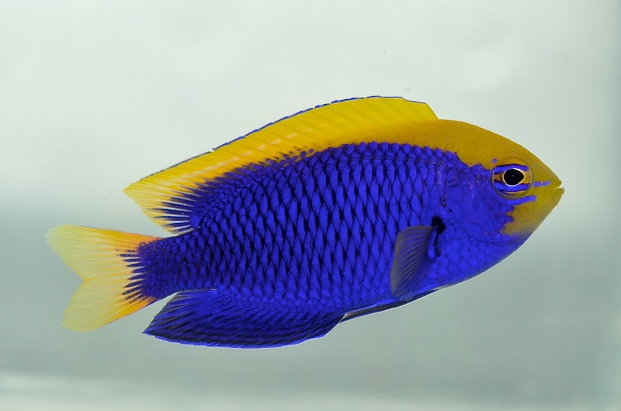Chrysiptera starcki is a well loved damsel that commonly graces the aquarium of most hobbyist. The bright blue and yellow coloration is a trademark branding for most Chrysiptera, but it looks spectacular on C. starcki. Although often imported from Australia, this fish has a rather unique distribution in the wild, being found from Philippines upwards to Japan, like the fish above, and Australia to Tonga like the fish below. On the world map, it’s range runs anti-equatorially and the link between Philippines and Australia is broken by Indonesia, where the fish is absent.

It is not uncommon for biological populations to speciate into completely different species, especially if the population becomes vicariant. Due to intrinsic forces that split the population, each isolated group may eventually, over thousands of years, end up as a distinct genetically different species. This phenomenon can be seen in closely related species such as the Centropyge argi angelfish complex, and most recently, the speciation of Macropharyngodon bipartitus, with the Red Sea population recently given an upgrade in its taxonomic status to full species level – Macropharyngodon marisrubri.

This is a tale of C. starcki from different localities which exhibit some interesting difference in their form. We’ve recently had the chance to examine two specimens from different regions up close and photograph them to show the difference. It is quite clearly seen in the tail region, with the northern population (Philippines upwards) exhibiting blue coloration on the whole caudal peduncle, as well as part of the tail fin rays. The tail lobes are also rounded. In the Australian representatives, the caudal peduncle is largely yellow, with sparse specks of blue. The tail lobes are more emarginate and slightly forked at the tip.
This difference have not gone unnoticed and there are many accounts in various forums and fish stores that note the difference in Australian as well as Asian populations of C. starcki. In a peer review journal by D steinke 2009, the difference was also mentioned in C. starcki from Tonga and the Philippines. We won’t be surprised if these two populations end up as distinct species in the future, but for now and even until then, the Starck’s damselfish will continue to enjoy popularity in the aquarium trade.



